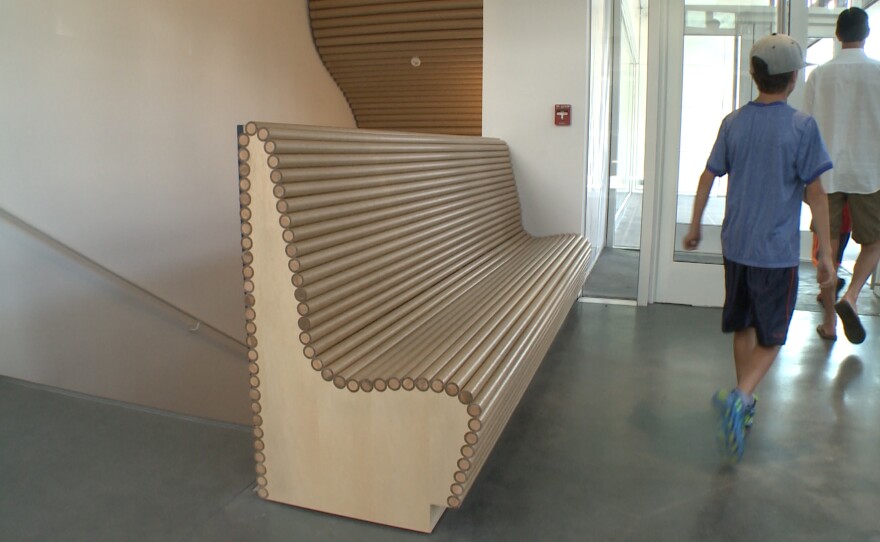Aspen has been home to a contemporary art museum for 35 years. Now, after seven years of controversy over design and size, the Aspen Art Museum is open in its new $45 million home.
Officials say it’s finally all about the art.
“Contemporary art, and a contemporary art museum like ours, without a permanent collection, is a laboratory,” said Aspen Art Museum CEO and director Heidi Zuckerman Jacobson.
That 33,000 square foot laboratory currently includes sculpture, humanitarian architecture, paintings, drawings, ceramics, environmental installations, and works on paper. The totality of the inaugural exhibits and projects were “designed to show the breadth and depth” of its interest in both loaned and newly commissioned work.
“When you are working in a laboratory, some things succeed and some things blow up in your face,” Zuckerman Jacobson said. “And you know, that’s just the way it goes.”
One of those lab experiments, an exhibit for which iPads were mounted to tortoises’ backs, is probably among the latter. Aspen resident Teresa Wyatt is among those that have signed onto a petition calling for its removal.
“I think this is not exactly what I consider art,” Wyatt said. “I think that it’s disrespectful, But I think [the artist] also forgot that during the daytime you can’t see those screens.”
It’s not just what’s housed in the museum; it’s the place itself too. Teresa Booth Brown, an artist-in-residence at nearby Anderson Ranch Arts Center, found the space rousing in an entirely different way.
“I never imagined this, I think it is unbelievable,” Booth Brown said. “I guess it’s just a great example of somebody really stretching, and reaching and dreaming pretty big to bring this to this community.”
It’s a reaction that has come about organically and completely in character for the small affluent mountain community. Thirty-five years ago, Richard Carter was one of three co-founders who dreamt up the Aspen Art Museum.
“I thought when we started this, it would probably grow and get conservative and then we’d have to go do something else that was a little more flaky and a little more radical,” Carter said. “But it never happened that way.”
Instead, the town has embraced the humble 9,000 square-foot former plant as its museum. In the past seven years they also rallied around the idea of showcasing world-class art in a world-class venue.
That was the plan all along, according to Zuckerman Jacobson.
“And so what we’ve done with this building is part of a continuum of and interest in the visual arts in Aspen,” Zuckerman Jacobson said.
Whether it makes people proud or perturbed, David Floria, a longtime gallery owner and former Aspen Art Museum director, said contemporary art displayed at the museum is a cultural and generational antenna.
“It’s the role of the artists, visual, as well as musicians or dancers or other forms of art to express what’s going on in their culture, in their surroundings,” Floria said. “Whether that’s purely aesthetic or political that’s what the artists do.”
Arts District is a collaboration of KUNC, RMPBS, and KUVO.
Editor's Note: An earlier version of this story misidentified Richard Carter as Richard Clark. We regret the error.















